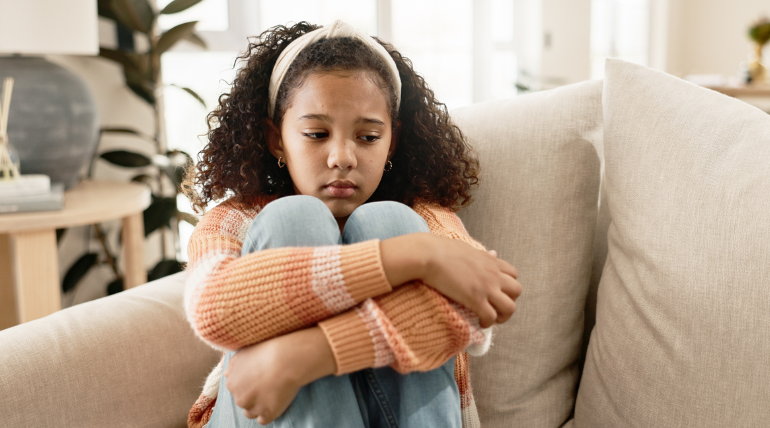Childhood should be a time of exploration, joy, and growth. However, anxiety can sometimes make even the simplest tasks feel overwhelming. While feeling anxious occasionally is normal, persistent or excessive worry can interfere with a child’s daily life. Occupational therapy (OT) offers effective strategies to help children navigate their emotions and develop coping mechanisms.
What Is Anxiety in Children & Why Does It Happen?
Anxiety in children often appears as excessive worry, fear, or distress that disrupts their ability to engage in school, play, or social interactions. Common forms of anxiety in children include:
- Separation Anxiety: Fear of being away from parents or caregivers.
- Generalized Anxiety Disorder (GAD): Persistent worry about daily activities.
- Social Anxiety: Intense fear of social situations or being judged.
- Specific Phobias: Extreme fear of certain objects or situations (e.g., heights, dogs, the dark).
Several factors may contribute to childhood anxiety, including:
- Genetics and family history of anxiety.
- Traumatic experiences or major life changes.
- Sensory processing challenges that make environments feel overwhelming.
- High expectations or pressures in school and social settings.
How Can Occupational Therapy Help Children with Anxiety?
Occupational therapists work to improve a child’s ability to function by addressing emotional regulation, sensory integration, and coping skills. Some key approaches include:
- Sensory Processing Techniques: Some children experience heightened reactions to sensory input, making everyday environments feel stressful. OT helps children regulate responses through calming activities like deep-pressure techniques, weighted blankets, or sensory-friendly spaces.
- Cognitive Strategies: Occupational therapists teach children mindfulness techniques, breathing exercises, and visualization methods to manage anxious thoughts.
- Routine & Structure: Creating predictable routines and strategies for transitions can reduce uncertainty and build confidence.
- Social Skills Training: Anxiety can hinder a child’s ability to interact with peers. OT sessions may include role-playing and confidence-building exercises to enhance social skills.
- Self-Regulation Strategies: Helping children recognize when they feel overwhelmed and equipping them with tools like stress balls, fidget toys, or movement exercises can foster independence in managing emotions.
Tips from an OT to Reduce Anxiety
Parents and caregivers play an essential role in helping children navigate anxiety. Here are some expert tips from occupational therapists:
✅ Encourage Deep Breathing: Simple exercises like “bubble breathing” (blowing imaginary bubbles slowly) can help calm the nervous system.
✅ Create a Safe Space: Designate a cozy corner with sensory-friendly elements like soft pillows, dim lighting, and calming music.
✅ Use Visual Schedules: Charts, calendars, or picture-based schedules help reduce uncertainty and provide structure.
✅ Teach Grounding Techniques: Encourage kids to focus on their surroundings (e.g., “Find 5 things you can see, 4 you can touch, 3 you can hear…”).
✅ Practice Mindfulness & Movement: Yoga, stretching, or nature walks can improve emotional regulation.
✅ Validate Their Feelings: Acknowledge their worries while offering reassurance. Saying “I see you’re feeling nervous, and that’s okay. Let’s figure out how to make it better together” fosters trust and emotional awareness.
Anxiety in children can be challenging, but with the right support and interventions—like occupational therapy—it is possible to empower children with the tools they need to thrive. The goal isn’t to eliminate anxiety but to help kids build resilience and confidence so they can engage fully in life.



